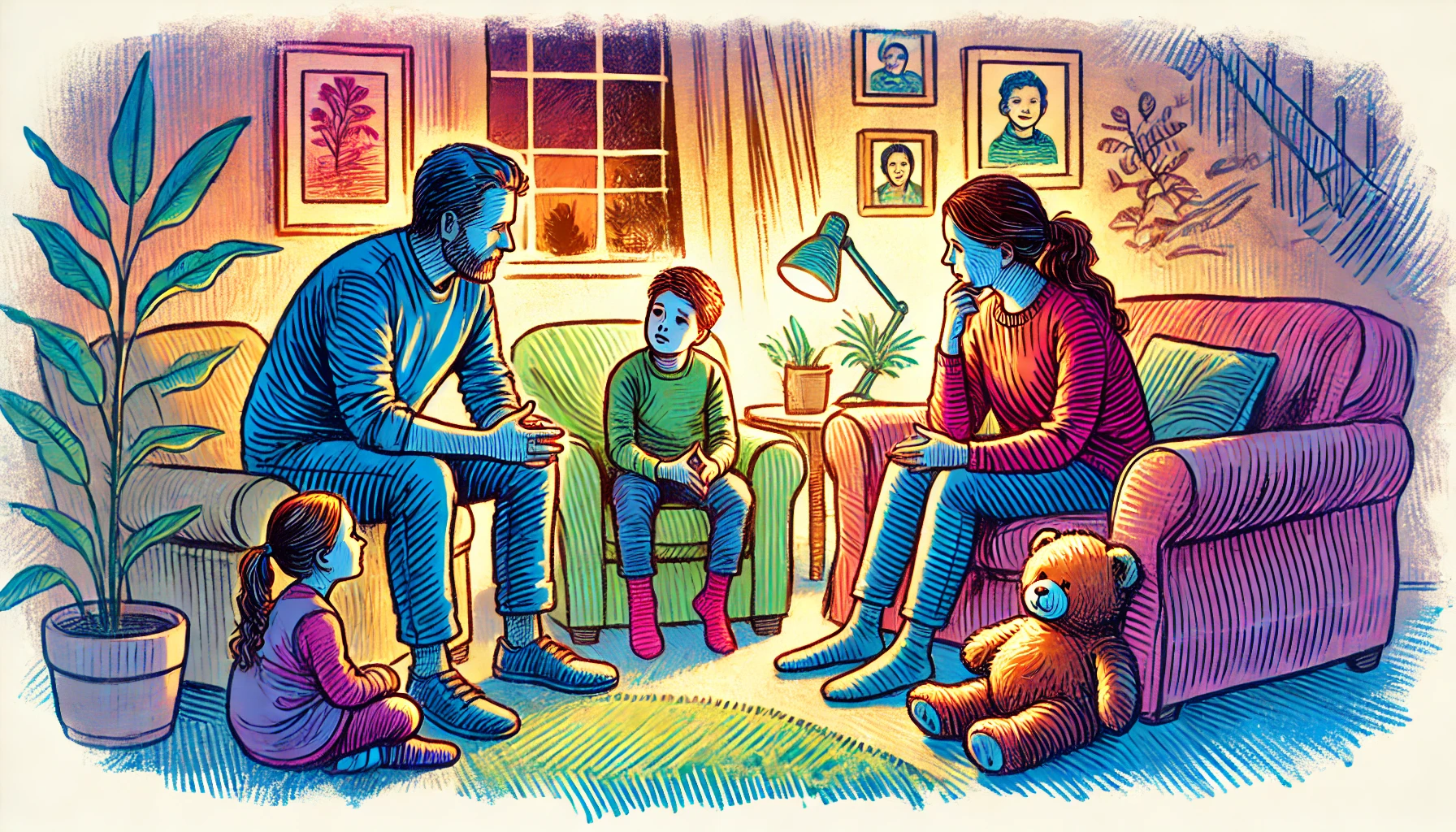Discussing death with children is one of the most challenging conversations a parent or caregiver can have. However, it is crucial to approach this topic with honesty, sensitivity, and care. Children, depending on their age and development, will have different levels of understanding and different reactions to the concept of death. Providing them with clear, age-appropriate information can help them process their feelings and cope with their loss. Here are some strategies to guide you through talking to children about death.
1. Use Simple and Clear Language
- Use straightforward language that matches the child’s developmental level. Avoid euphemisms like “passed away” or “gone to sleep,” which can be confusing.
- Explain death as a natural part of life, using concrete terms such as “dead” and “died.”
- Provide clear information, such as “When someone dies, their body stops working and they don’t come back.”
- Be honest about the facts, but avoid overwhelming them with too much detail.
- Check for understanding and encourage questions to ensure they grasp the concept.
2. Be Honest and Direct
- Answer their questions honestly, even if the answers are difficult or uncomfortable.
- Avoid giving false hope or misleading information about the permanence of death.
- If you don’t know the answer to a question, it’s okay to say so and explore the answer together.
- Honesty builds trust and helps children feel safe discussing their feelings.
- Acknowledge your own feelings of sadness and grief, modeling healthy emotional expression.
3. Encourage Questions
- Create an open environment where children feel comfortable asking questions about death and dying.
- Listen to their questions and concerns without interrupting or dismissing them.
- Answer questions as simply and accurately as possible, ensuring that the information is age-appropriate.
- Be patient, as children may ask the same questions multiple times while they process the information.
- Encourage them to express their thoughts and feelings, reinforcing that their emotions are valid.
4. Validate Their Feelings
- Acknowledge and validate their feelings, whether it’s sadness, confusion, anger, or fear.
- Let them know it’s normal to have a range of emotions when dealing with death.
- Provide comfort and reassurance through physical affection and verbal support.
- Share your own feelings appropriately to show that it’s okay to express emotions.
- Help them find words to describe their feelings, aiding in emotional literacy.
5. Use Books and Stories
- Utilize children’s books that address death and grief in an age-appropriate manner.
- Reading stories about death can provide a gentle introduction to the concept and facilitate discussion.
- Books can offer relatable characters and situations, helping children understand and process their feelings.
- Discuss the story afterwards to reinforce the messages and answer any questions.
- Consider resources recommended by child psychologists or grief counselors for the most effective choices.
6. Provide Reassurance
- Reassure children that it’s okay to feel sad and that they are not alone in their grief.
- Emphasize that their feelings are valid and that it’s normal to grieve differently.
- Provide a sense of security by maintaining routines and offering consistent support.
- Reassure them that they are safe and that other loved ones are healthy and present.
- Offer extra attention and affection during this difficult time to help them feel supported.
7. Explain Funeral and Memorial Services
- Prepare children for what to expect at funerals or memorial services if they will be attending.
- Explain the purpose of these events and what they might see, hear, and do.
- Let them know that it’s okay to express their emotions during the service and that people may be crying or showing other signs of grief.
- Offer them choices about their participation, allowing them to feel more in control.
- Answer any questions they have about the ceremony or traditions involved.
8. Create a Memory Box or Scrapbook
- Encourage children to create a memory box or scrapbook filled with photos, letters, and mementos of the deceased.
- This activity can help them process their grief and keep the memory of their loved one alive.
- Allow them to choose what to include and how to decorate their memory box or scrapbook.
- Sharing and discussing the items can provide opportunities for conversation and healing.
- This tangible connection can offer comfort and a way to remember and honor their loved one.
9. Be Patient and Available
- Recognize that children may need time to fully understand and process their grief.
- Be available for ongoing conversations and emotional support as they continue to cope with their loss.
- Watch for changes in behavior that may indicate they need additional help or support.
- Offer reassurance and check in with them regularly to see how they are feeling.
- Patience and consistent support can help them navigate their grief over time.
10. Seek Professional Help if Needed
- If a child’s grief seems overwhelming or persistent, consider seeking help from a child psychologist or grief counselor.
- Professional support can provide specialized strategies and a safe space for children to express their emotions.
- Look for signs that may indicate they need extra help, such as prolonged sadness, withdrawal, or changes in behavior.
- Encourage open communication with the therapist to ensure the child’s needs are being met.
- Professional help can facilitate healthy coping and prevent long-term emotional issues.
Talking to children about death requires sensitivity, honesty, and a supportive approach. By using simple and clear language, being direct, encouraging questions, validating their feelings, using books and stories, providing reassurance, explaining funeral services, creating memory boxes, being patient, and seeking professional help if needed, you can help children navigate their grief and understand the concept of death. These strategies foster a safe and supportive environment where children can process their emotions and find comfort during a difficult time.

